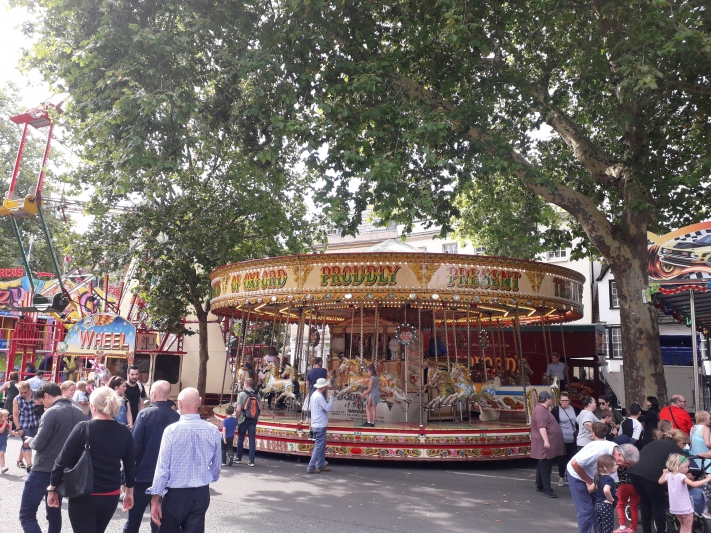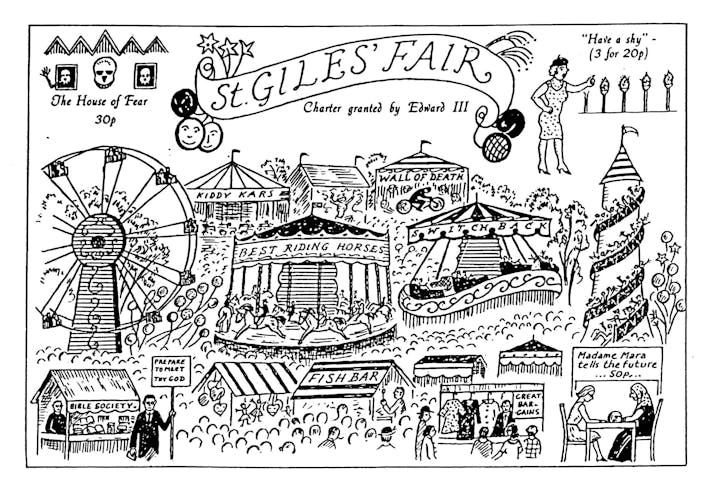Review of St Giles Fair 2010
Whilst waiting for a friend of ours to show up, we walked all the way around the stalls at the St Giles street fair - it took us half an hour. Admittedly, our pace wasn't brisk, with hundreds of people out despite the rain, but I still feel I can say without exaggeration that the fair is rather large.
There were numerous stalls and vans labelled unlikely things, such as "Fine foods" and "Who'd a tho't it?" serving all the usual suspects; burgers, candy floss, toffee apples, sweets and hot dogs. A nice little touch, however, was the Jamaican food stall opposite the entrance to Cornmarket Street, serving Jerk chicken, fried plantains and corn on the cob, amongst other delights. The Carvery van wasn't too shabby, either, serving a range of meats in baguettes for reasonable prices (considering funfairs don't tend to be cheap).
Sadly we didn't go on any rides because, according to my friend, she doesn't "really like... fun", but after a roast pork sandwich it may just have been that the thought of being turned upside down and swung downwards some metres by the largest ride there didn't seem very appealing. There was an impressive collection, with two carousels (one faster, one slower), several of the things I believe are called 'waltzers' but nothing has ever reminded me of ballroom dancing less, a giant whirligig (this may not be its actual name, but it's the best anyone in the office could come up with) that was taller than the buildings on either side, and many many stalls with unmissable classics such as 'Hook the Duck', 'Coconut shy' and, of course, the haunted house. We even saw a fortune teller, but, at the kind of age when discussion of 'the Future' causes no small amount of panic, we didn't go.
One thing we did try was the 'coconut' shy; the idea being to knock cans off a shelf using skill and coordination. We should have realised that neither of these were in abundance in our group, but the lure of the giant stuffed animals was too much. I am very impressed by the lady who won a giant animal; I would have chosen a lurid green crocodile myself, but there's no accounting for taste! (See picture 4, to the right, taken by James Lyon and generously shared with us - the pictures I took on my phone didn't come out quite as I wanted them to...).
Even through the rain, and obstacles presented by our lack of coordination, the funfair had enough to offer that, despite my gloomy friend, we had fun! We didn't win anything, but we went home happy and fulfilled (the roasted corn on the cob is amazing in the cold). The St Giles fair takes over St Giles street every year at the beginning of September, and has existed in one form or another since the 18th century! Go along for a couple of hours and see what all the fuss is about.





